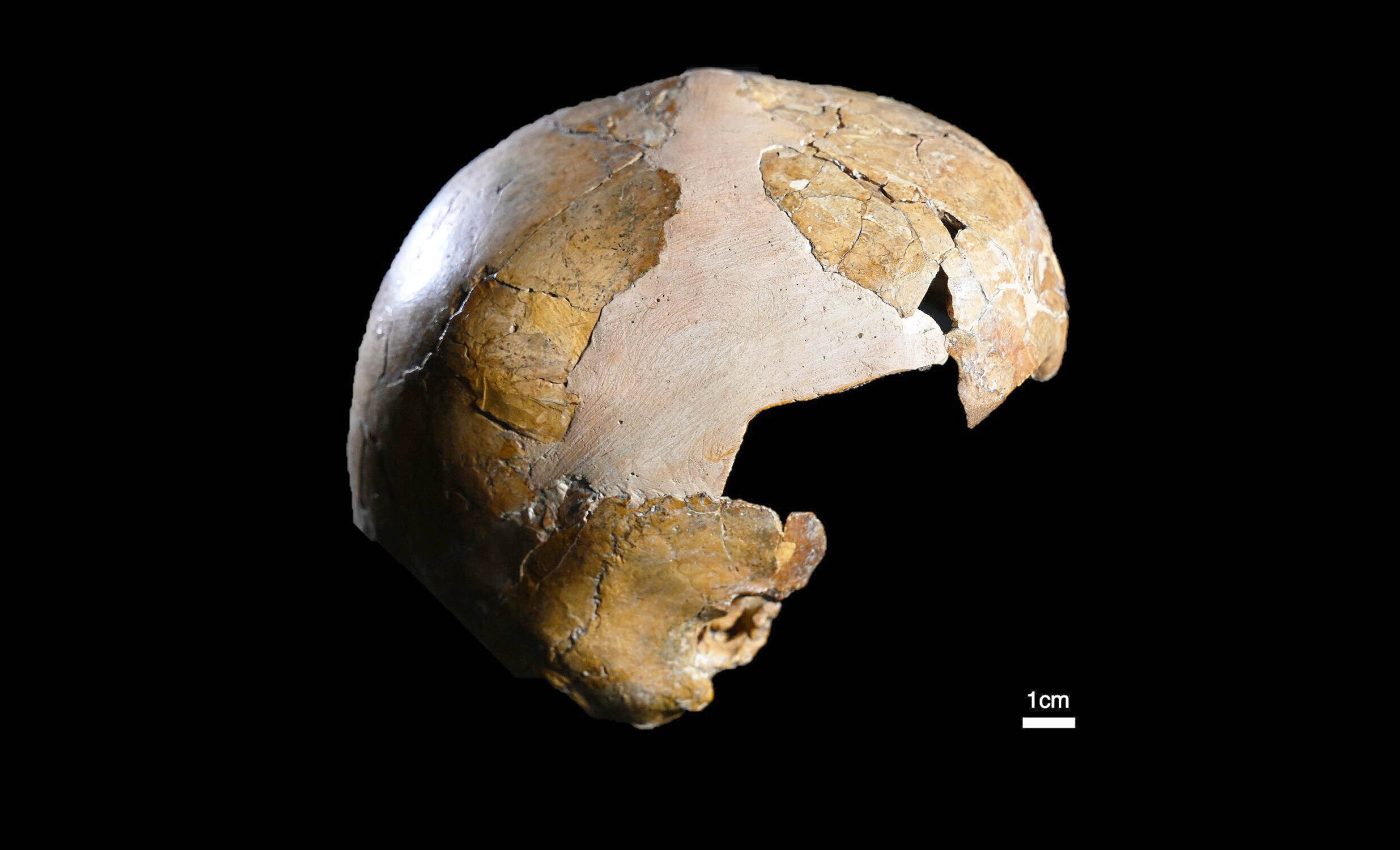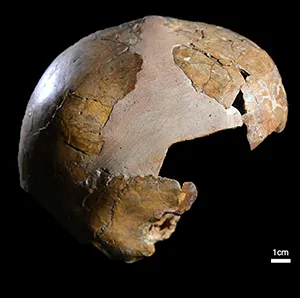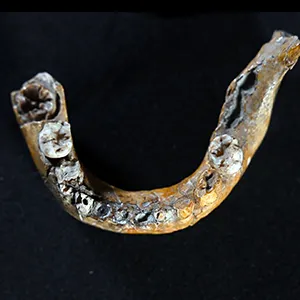
Skeleton is determined to be a 'hybrid child' of a human and Neanderthal interbreeding
A child’s skeleton, found nearly a century ago in Skhul Cave on Mount Carmel in Israel, has taken on new meaning after a modern re-analysis.
A fresh look at the skull and jaw, dated to roughly 140,000 years ago, suggests that the remains show a blend of Homo sapiens and Neanderthal traits.
The authors say this specimen is the earliest anatomically modern human fossil to show this mix of features, and they propose the child may reflect early population contact in the Levant.
Other researchers welcome the data but note that proof of a hybrid requires more than bones alone.
This work comes from Professor Israel Hershkovitz of Tel Aviv University (TAU) and Anne Dambricourt-Malassé of the French National Centre for Scientific Research (CNRS).
Their international team revisited the specimen known as Skhul I with state-of-the-art imaging.
Fossil features of the Skhul child
The braincase has the overall curved vault seen in modern humans, while the lower jaw lacks a chin and shows dental patterns more typical of Neanderthals, according to the study.
In paleoanthropology, the bony chin, or mentum osseum, is usually considered a hallmark of our species, so its absence matters to the anatomical argument.
“Genetic studies over the past decade have shown that these two groups exchanged genes,” said Professor Hershkovitz.
Genetic research over the last decade shows that many people living outside Africa carry a small share of Neanderthal DNA, and the primary wave of gene flow likely occurred around 50,000 to 60,000 years ago.
The team also noted inner ear anatomy that is consistent with Neanderthal-like traits in parts of the skull.
That line of evidence has weight because the bony labyrinth of the inner ear preserves well and is useful for sorting ancient populations, even if there is some overlap between groups.

Why the Skhul child matters
Skhul and nearby Qafzeh have long been known for early intentional burials, a sign that complex social behavior was in play among Pleistocene people in the Levant.
If the Skhul I child is not purely Homo sapiens, then the earliest formal burials may not belong to a single lineage.
The Levant already looks like a long-term meeting zone. A 2021 report from Israel’s Nesher Ramla site described a Middle Pleistocene group with a patchwork of features, consistent with repeated contact among regional populations.
That context makes a mixed-feature child from Skhul easier to imagine in population terms.
A later and famous case often raised in comparisons is the Lagar Velho child from Portugal.
This evidence, dated to about 24,500 years ago, showed a mosaic of features and sparked debate about mixing late in Europe’s prehistory. Skhul I predates that Iberian burial by well over 100,000 years.
Testing an old fossil
The researchers scanned the skull and jaw using micro-CT, built detailed 3D models, and virtually “removed” historic plaster from the jaw to avoid biasing measurements.
The team corrected the position of a frontal bone piece and compared the inner ear and dental structures with known Neanderthal and modern human samples.
Inner ear form is not a casual choice here. Because this structure develops early and sits in dense bone, it tends to resist environmental noise and often tracks population history in comparative datasets.
That makes the labyrinth a useful, though not perfect, marker alongside cranial and mandibular traits.

Controversy surround the hybrid claim
Skepticism centers on whether bones alone can prove hybrid ancestry. Paleoanthropologist Chris Stringer noted that, in his view, the material still primarily aligns with Homo sapiens while allowing that some gene flow could be reflected at Skhul.
Other specialists point out that the main wave of Neanderthal ancestry in living people traces to encounters tens of thousands of years later than the Skhul burial.
Studies mapping archaic segments across modern genomes consistently place the largest signal of Neanderthal ancestry in a window around 50,000 years ago.
The cleanest way to settle this for Skhul I would be ancient DNA. That may be difficult in warm environments.
However, the petrous portion of the temporal bone often yields far more endogenous DNA than other skeletal elements and has transformed work on ancient genomes.
Future research directions
Two things can change the conversation fast: new genome data from Skhul remains and broader comparative frameworks for Levantine fossils of this age.
The inner ear and mandible findings invite a re-check of other Mount Carmel material with the same toolkit the team used here.
Separately, the Levant’s cultural record matters for how we read identity in these bones.
Mousterian stone tools made with the Levallois method appear with both Neanderthals and early modern humans in this region, so toolkits alone do not sort populations cleanly
A final note on expectations helps keep things grounded. Anatomy can document a mosaic of traits, but deciding whether that mosaic means a first-generation hybrid or long-term gene flow across neighboring groups is a question that only genetics can pin down with confidence.
Click here to watch a video explanation of the Skhul child…
The study is published in the journal L’Anthropologie.
—–
Like what you read? Subscribe to our newsletter for engaging articles, exclusive content, and the latest updates.
Check us out on EarthSnap, a free app brought to you by Eric Ralls and Earth.com.
—–













